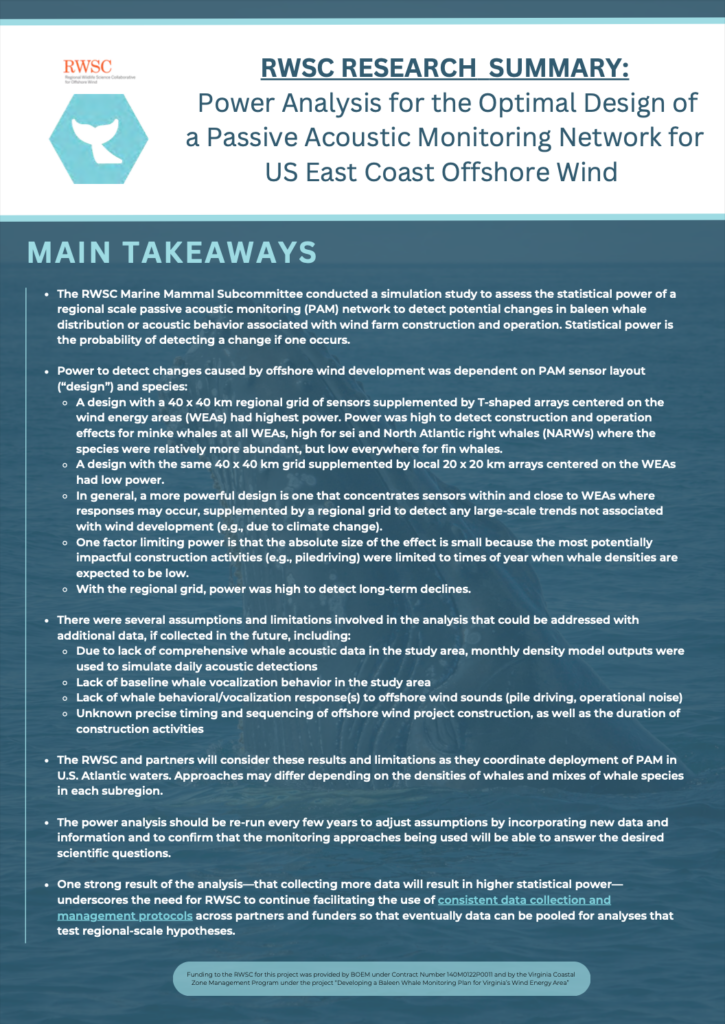
A brief handout summarizing the results and intended uses of the RWSC Marine Mammal Subcommittee’s recent passive acoustic monitoring (PAM) study is now available.
The Subcommittee conducted a simulation study to assess the statistical power of a regional PAM network to detect potential changes in baleen whale distribution or acoustic behavior associated with wind farm construction and operation.
The RWSC and partners will consider the results and limitations of the study as they coordinate deployment of PAM in U.S. Atlantic waters.
This week, RWSC is convening all four Sectors (federal agencies, states, offshore wind companies, eNGOs), researchers, and other exprts to strategize deployment, data management, and analysis of long-term/archival PAM in U.S. Atlantic waters.
RWSC is helping to coordinate the long-term/archival PAM plans that are required by BOEM in several recent offshore wind Construction and Operations Plan Approval Letters, as well as the historic investments in PAM from multiple state and federal agencies that are intended to improve monitoring of large whales.
To learn more about the RWSC Marine Mammal Subcommittee’s work on PAM, visit https://rwsc.org/pam.